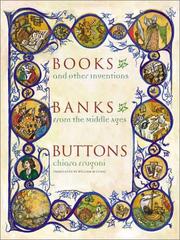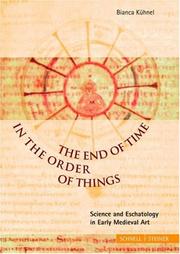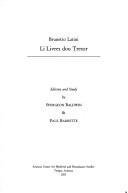| Listing 1 - 6 of 6 |
Sort by
|
Book
ISBN: 0262275546 0585480192 9780262275545 9780585480190 Year: 2003 Publisher: Cambridge, Mass. : MIT Press,
Abstract | Keywords | Export | Availability | Bookmark
 Loading...
Loading...Choose an application
- Reference Manager
- EndNote
- RefWorks (Direct export to RefWorks)
"Between A.D. 800 and 1450, the most important centers for the study of what we now call "the exact sciences"--Including the mathematical sciences of arithmetic, geometry, and trigonometry and their applications in such fields as astronomy, astrology, geography, cartography, and optics - were not in Europe but in the vast, multinational Islamic world." "This book offers an overview of this newly energized field of historical investigation. The topics discussed include cross-cultural transmission; transformations of Greek optics; the philosophy and practice of mathematics; numbers, geometry, and architecture; the transmission of astronomy; and science and medicine in the Maghrib. The emphasis throughout the book is on the transmission of scientific knowledge, either from one culture to another or within the medieval Islamic world."--Jacket.
Science, Medieval. --- Science --- Sciences - General --- Physical Sciences & Mathematics --- Medieval science --- History.

ISBN: 0231128126 Year: 2003 Publisher: New York Columbia University
Abstract | Keywords | Export | Availability | Bookmark
 Loading...
Loading...Choose an application
- Reference Manager
- EndNote
- RefWorks (Direct export to RefWorks)
pr. titel: Medioevo sul naso : occhiali, bottoni e altre invenzioni medievali
Inventions --- Civilization, Medieval. --- Technology --- Civilisation médiévale --- Technologie --- History --- Histoire --- Science, Medieval --- 940.1 --- 091.31:7.04 --- Medieval science --- 091.31:7.04 Verluchte handschriften: iconografie --- Verluchte handschriften: iconografie --- History Europe Middle Ages (476 - 1453) --- Uitvindingen --- Geschiedenis --- Middeleeuwen --- Uitvinding --- Geneeskunde --- Techniek (wetenschap) --- Atlas --- Museum --- Sciences medievales
Book
ISBN: 227106015X 9782271060150 Year: 2003 Publisher: Paris: CNRS,
Abstract | Keywords | Export | Availability | Bookmark
 Loading...
Loading...Choose an application
- Reference Manager
- EndNote
- RefWorks (Direct export to RefWorks)
091.14:003.5 --- 667.5 --- Ink --- Codices--Schrijfmaterialen --- Printing inks (black or coloured). Lithographic inks. Chalks. Writing and drawing pencils. Coloured crayons --- 667.5 Printing inks (black or coloured). Lithographic inks. Chalks. Writing and drawing pencils. Coloured crayons --- 091.14:003.5 Codices--Schrijfmaterialen --- -Science, Medieval --- Medieval science --- Writing materials and instruments --- History
Book
ISBN: 3050034955 1306487080 3050056096 9783050056098 9783050034959 Year: 2003 Volume: 1 Publisher: Berlin
Abstract | Keywords | Export | Availability | Bookmark
 Loading...
Loading...Choose an application
- Reference Manager
- EndNote
- RefWorks (Direct export to RefWorks)
Im Jahre 1903 erschien, herausgegeben von Paul Kaiser, die erste neuzeitliche Ausgabe des Werkes "Cause et Cure". Kaiser schrieb diesen Text Hildegard von Bingen zu. Die Edition Kaiser war ein Jahrhundert lang die maßgebliche Textversion; gleichwohl wurde in Rezensionen bald nach Erscheinen auf Mängel und offensichtliche Schwächen hingewiesen (Transkriptionsfehler, keine nennenswerten Apparate, sprachliche Anpassungen an das klassische Latein). Das Werk "Cause et Cure" selbst hat zu Forschungen in erheblicher Zahl und mit breiter Wirkung auf die Erforschung der Medizingeschichte angeregt: hinsichtlich der überaus schmalen handschriftlichen Überlieferung (eine Handschrift und ein Fragment in Berlin; letzteres wurde in den 50er Jahren von Heinrich Schipperges neu entdeckt und publiziert); in bezug auf die darin verarbeiteten Quellen; in bezug auf den authentischen Anteil Hildegards an diesem Werk; hinsichtlich der Datierung der Endredaktion; über das mittelhochdeutsche pharmakologisch-medizinische Vokabular etc. Die international herausragende Spezialistin für die Medizin Hildegards von Bingen, die französische Historikerin Laurence Moulinier unternimmt in dieser Ausgabe, in Zusammenarbeit mit Rainer Berndt, eine neue kritische Ausgabe. Diese beruht auf einer vollständigen Neuherstellung des kritischen Textes aus der einzigen vollständigen, der Kopenhagener Handschrift. Im Quellenapparat sind die gesamten Forschungsergebnisse der letzten Jahre rezipiert. Der Text wird begleitet von vier Apparaten: Zitationen, Quellen, Similia im Werk Hildegards, Textapparat. Das medizinische Vokabular erfährt dabei besondere Aufmerksamkeit, indem es mit zeitgenössischen Parallelen verglichen wird. Die entscheidende Authentizitätsproblematik diskutiert die Herausgeberin in extenso. So kann sie präzise einen ursprünglichen Hildegardschen Kerntextbestand ausmachen, der von späteren Redaktoren erweitert worden ist dergestalt, dass schließlich der vorliegende Text aus diesem Prozess hervorging. Da aus diesem Beweisgang zwingend folgt, dass die Endredaktion des Werkes in den 20er Jahren des 13. Jahrhunderts anzusetzen ist, scheidet Hildegard als Autorin des überlieferten Textes aus. Sechs Abbildungen von Seiten der Kopenhagener Handschrift führen die Werkeinteilung vor Augen.
Geneeskunde [Middeleeuwse ] --- Geneeskunde [Middeleeuwse ]--Werken voor 1800 --- Medicine [Medieval ] --- Medicine [Medieval ]--Early works to 1800 --- Medicine--Early works to 1800 --- Medieval medicine --- Medieval science --- Middeleeuwse geneeskunde --- Middeleeuwse wetenschap --- Médecine médiévale --- Médecine médiévale--Ouvrages avant 1800 --- Science [Medieval ] --- Science médiévale --- Wetenschap [Middeleeuwse ] --- Medicine, Medieval. --- Holistic medicine --- 248 HILDEGARDIS BINGENSIS --- Spiritualiteit. Ascese. Mystiek. Vroomheid--HILDEGARDIS BINGENSIS --- Medicine, Medieval --- Hildegard --- Contributions in science --- Diseases --- Causes and theories of causation --- Holistic medicine - Early works to 1800

ISBN: 3795415055 9783795415051 Year: 2003 Publisher: Regensburg Verlag Schnell & Steiner GmbH
Abstract | Keywords | Export | Availability | Bookmark
 Loading...
Loading...Choose an application
- Reference Manager
- EndNote
- RefWorks (Direct export to RefWorks)
Painting --- Christian dogmatics --- anno 800-899 --- anno 900-999 --- Art, Medieval --- Christian art and symbolism --- Art and science. --- Astronomy, Medieval. --- Science, Medieval. --- Themes, motives. --- Art and science --- -Astronomy, Medieval --- -Christian art and symbolism --- -Science, Medieval --- -704.9495 --- 509 --- Medieval science --- Art, Christian --- Art, Ecclesiastical --- Arts in the church --- Christian symbolism --- Ecclesiastical art --- Religious art, Christian --- Sacred art --- Symbolism and Christian art --- Art --- Symbolism --- Christian antiquities --- Church decoration and ornament --- Medieval astronomy --- Medieval art --- Science and art --- Science --- Themes, motives --- Arts Sciences --- Sciences History --- Astronomy, Medieval --- Science, Medieval --- 704.9495 --- Subjects --- Art, Medieval - Themes, motives. --- Christian art and symbolism - Medieval, 500-1500.

ISBN: 0866983007 9780866983006 Year: 2003 Volume: 257
Abstract | Keywords | Export | Availability | Bookmark
 Loading...
Loading...Choose an application
- Reference Manager
- EndNote
- RefWorks (Direct export to RefWorks)
Brunetto Latini (ca. 1220-1294) was a prominant figure in Florentine politics, perhaps most widely known because of Dante's reference to him in Canto XV of the Inferno. His Livre dou Tresor is a compilation of material previously available to the learned in Latin texts, presented here in a vernacular language as a kind of De Regimine principum not for the nobility, but for those responsible for city government in the political circumstances prevalent in Italy, and more specifically Florence, at the time. Written in French during his exile in France (1260-1266), and possibly dedicated to Charles of Anjou himself, the work enjoyed wide popularity during the next two centuries, as attested by the numerous medieval manuscripts: approximately 80 in French, perhaps as many as 40 Italian translations, and some 17 in various Iberian languages, including Castilian, Catalan, and Aragonese. This edition is based on the Escorial manuscript, an early (late thirteenth century) version in French, reflecting certain features of the language of the north, and especially of Picardy, where Brunetto spent most of his exile years. The Escorial manuscript appears to be unique among early manuscripts in French in that it contains much material missing from the other manuscripts in French; of special interest is a long passage in the Bestiary, which is missing from all other French versions.
Beschaving [Middeleeuwse ] --- Civilisation médiévale --- Civilization [Medieval ] --- Civilization [Medieval ]--History --- Europa--Beschaving--476-1492 --- Europe--Civilisation--476-1492 --- Europe--Civilization--476-1492 --- Medieval civilization --- Medieval science --- Middeleeuwen--Beschaving --- Middeleeuwen--Cultuur --- Middeleeuwse beschaving --- Middeleeuwse cultuur --- Middeleeuwse wetenschap --- Middle Ages--Civilization --- Moyen-Age--Civilisation --- Science [Medieval ] --- Science médiévale --- Wetenschap [Middeleeuwse ] --- Encyclopedias and dictionaries --- Encyclopedias and dictionaries, French --- Learning and scholarship --- Civilization, Medieval --- Science, Medieval --- History --- Encyclopedias and dictionaries [French ] --- Translations into English --- Early works to 1600 --- Medieval, 500-1500 --- Middle Ages, 500-1500 --- Encyclopedias and dictionaries - Early works to 1600 --- Encyclopedias and dictionaries, French - Early works to 1600 --- Learning and scholarship - History - Medieval, 500-1500
| Listing 1 - 6 of 6 |
Sort by
|

 Search
Search Feedback
Feedback About
About Help
Help News
News